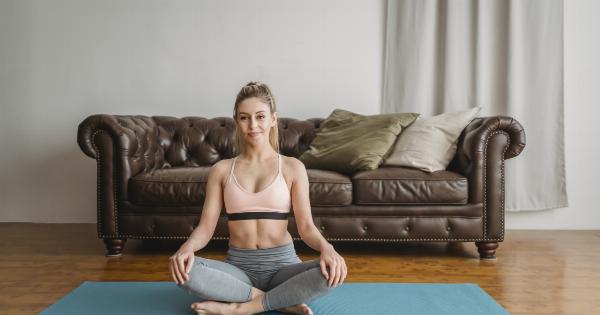As we age, it becomes increasingly important to prioritize our health and fitness. Regular exercise not only keeps our bodies strong, but it can also help combat the effects of aging.
One form of exercise that has been gaining popularity among seniors is high-intensity interval training (HIIT). Often referred to as the “Fountain of Youth” for seniors, HIIT offers a wide range of physical and cognitive benefits that can greatly improve their quality of life.
What is HIIT?
High-intensity interval training (HIIT) is a workout style that alternates between intense bursts of activity and short recovery periods.
Unlike traditional steady-state cardio exercises, such as jogging or cycling, HIIT involves pushing your body to its maximum capacity for short bursts, followed by brief rest periods.
Physical Benefits of HIIT for Seniors
The physical benefits of HIIT for seniors are numerous and impactful. Here are a few key advantages that make it the ideal workout for older adults:.
1. Increased cardiovascular fitness
HIIT workouts typically involve intense cardiovascular exercises like jumping jacks, burpees, or high knees. Engaging in these activities helps improve heart health, boosts overall cardiovascular fitness, and increases stamina.
2. Improved muscle strength and endurance
HIIT exercises target multiple muscle groups simultaneously, helping to build strength and endurance. This is particularly beneficial for seniors who may experience age-related muscle loss.
3. Enhanced balance and flexibility
Keeping balance and flexibility intact is crucial for seniors, as it reduces the risk of falls and injuries. HIIT exercises often incorporate stretches and movements that can improve balance and flexibility, promoting better mobility and independence.
4. Weight management
One of the most effective ways to manage weight is by engaging in HIIT workouts. The high-intensity nature of these exercises burns a significant number of calories, even after the workout is complete.
Additionally, HIIT can help preserve lean muscle mass, which is important for maintaining a healthy metabolism.
5. Reduced risk of chronic diseases
Regular HIIT sessions have been shown to lower the risk of chronic diseases, such as diabetes, heart disease, and high blood pressure, which commonly affect seniors.
Engaging in HIIT helps keep blood sugar levels in check, lowers cholesterol, and improves overall cardiovascular health.
Cognitive Benefits of HIIT for Seniors
HIIT not only benefits seniors physically but also provides several cognitive advantages that contribute to mental well-being. Here are a few cognitive benefits of incorporating HIIT into a senior’s exercise routine:.
1. Increased mental sharpness
HIIT workouts require focus and mental engagement, as they involve rapid changes in exercises and high-intensity movements. This helps improve cognitive function, memory, and mental processing speed.
2. Stress relief and mood enhancement
Exercise, including HIIT, releases endorphins in the body, which are known as “feel-good” hormones. This natural mood booster can help alleviate stress, reduce symptoms of anxiety and depression, and enhance overall mental well-being.
3. Prevention of age-related cognitive decline
Research suggests that regular aerobic exercise, like HIIT, can help prevent age-related cognitive decline and neurodegenerative diseases, such as Alzheimer’s.
HIIT stimulates the release of certain growth factors in the brain, which promote the growth of neurons and protect against cognitive decline.
Incorporating HIIT into a Senior’s Routine
Before seniors embark on a HIIT journey, it is essential to consult with their healthcare provider to ensure it is safe for them to engage in such high-intensity workouts.
Here are some tips for seniors looking to incorporate HIIT into their exercise routine:.
1. Start slowly and gradually increase intensity
Seniors should begin with low-intensity exercises and gradually increase the intensity as they build strength and stamina. It is important to listen to their bodies and not push too hard, too soon.
2. Modify exercises to match fitness levels
Not all HIIT exercises may be suitable for seniors. It is crucial to modify exercises to match their fitness levels and any pre-existing conditions.
For instance, seniors with joint issues can opt for low-impact exercises like modified jumping jacks or marching in place.
3. Allow for sufficient recovery time
Seniors should give themselves ample time to recover between HIIT workouts. Recovery periods are vital for the body to repair and rebuild muscles. It is advisable to have at least 48 hours of rest between high-intensity sessions.
Conclusion
High-intensity interval training (HIIT) has proven to be a game-changer for seniors, offering a multitude of physical and cognitive benefits.
From increased cardiovascular fitness and muscle strength to enhanced mental sharpness and stress relief, HIIT truly is the “Fountain of Youth” for older adults. It is essential for seniors to consult their healthcare providers before embarking on any new exercise regimen and to proceed with caution, starting slowly and gradually increasing intensity.
With the right guidance and modifications, seniors can enjoy the rejuvenating effects of HIIT, ensuring a healthier and more vibrant life in their golden years.


























